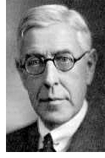 |  |
 |  |


Fyfe (1947) 1947 Fyfe Report (text) |
The Fyfe Report (1947) Secondary Education A Report of the Advisory Council on Education in Scotland Edinburgh: His Majesty's Stationery Office 1947
Background notes Historical context In The Advisory Council on Education in Scotland 1920-1961, his 1986 doctoral thesis for Edinburgh University, John Young argues that The Advisory Council was modelled on the Consultative Committee to the Board of Education in England, to act in an advisory capacity to the central Department. Unlike the Consultative Committee, however, the Advisory Council was generally unable to shake itself free from the close supervision of the central Department, producing notable reports on two occasions only, once soon after its establishment, and again at the end of the second World War, when the sixth Council produced four major reports. On both occasions, in the early 1920's and the late 1940's, the reports of the Council were highly regarded by the Scottish educational community, but were not adopted by the Department (Young 1986: abstract).  The Chair of the Council for this report was Sir William Hamilton Fyfe (1878-1965). The Chair of the Council for this report was Sir William Hamilton Fyfe (1878-1965).
Fyfe (pictured) had taught in several schools and had been Head of Christ's Hospital in Sussex. In 1930 he moved to Canada to take up the post of Principal at Queen's University in Kingston, Ontario, returning to the UK in 1936 to become Principal and Vice Chancellor of the University of Aberdeen, a post he held until he retired in 1948.
The Council's recommendations The Advisory Council made 107 recommendations which are listed in the Summary of their Report. They endorsed a comprehensive system of 'omnibus' schools for all secondary pupils aged 12 to 16, with a common core curriculum and a common leaving exam. They dismissed the tripartite system of grammar, technical and secondary modern schools, which was then being established in England, as unsuitable for Scotland for four 'decisive reasons': (1) It is so unrelated to our existing system, with its multilateral secondary schools, both senior and junior, that it would mean not a development but a revolution. (2) The whole scheme rests on an assumption which teacher and psychologist alike must challenge - that children of twelve sort themselves out neatly into three categories to which these three types of school correspond. ... (3) Status does not come with the attaching of a name or by a wave of the administrative wand, and the discussion to date has left the position of the modern school neither defined nor secure. Indeed, it seems clear to many that the modern school will in practice mean little more than what is left, once the grammar and technical types have been housed elsewhere ... (4) But even if the tripartite scheme were wholly feasible, is it educationally desirable? If education is much more than instruction, is in fact life and preparation for life, can it be wisdom thus to segregate the types from an early age? On the contrary, we hold that school becomes colourful, rich and rewarding just in proportion as the boy who reads Homer, the boy who makes wireless sets and the boy without marked aptitude for either are within its living unity a constant stimulus and supplement one to another (page 31). The report online The complete text of the 1947 Fyfe Report is presented in a single web page. I have corrected a handful of printing errors, modernised some of the punctuation, and added a few explanatory notes [in square brackets]. Otherwise the text shown here is as in the original printed version.
The above notes were prepared by Derek Gillard and uploaded on 3 November 2018. |